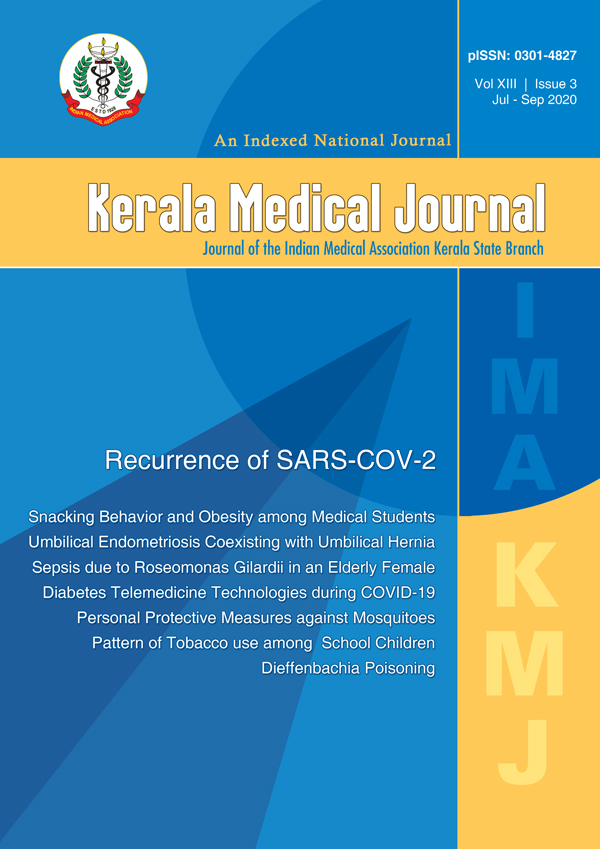Cost Effectiveness and Pattern of Personal Protective Measures used against Mosquitoes in a Rural Coastal Region of Ernakulam District in Kerala
Abstract
Background and Objectives: Mosquito borne diseases including Dengue, Chickungunya, Malaria, Japanese encephalitis, Filariasis, Zika fever and Yellow fever are a growing public health concern. The state of Kerala in Southern India has been a hot bed for vector borne diseases with epidemics of Dengue and Chikungunya in 2003 and 2006 respectively. The present study was undertaken in a rural panchayath in Ernakulam district with an aim to understand the pattern of use of personal protection measures against mosquitoes, its socio-demographic determinants and the economic burden it imposes.
Methods: A cross sectional study was conducted in June 2015 in Elamkunnapuzha Panchayath, a rural coastal area located in Ernakulam District of Kerala in Southern India. 200 households were visited using multistage sampling technique using pretested semi-structured questionnaire. Data was entered in MS Excel and data analysis done in Statistical Package for Social Science version 19. Ethical approval was obtained from the institutional ethical committee.
Results: Among the 194 families consented to share data, more than two-third (68%) of the study households experienced mosquito menace. 94.8 % of the households used PPM, but only 67.5% of the households used on a daily basis. The most commonly used PPM among the study households were vaporizer (52.1%) followed by coil (42.3%) and fumes (19.1%). Mosquito menace and expenditure showed association with various factors.
Conclusion: Personal protective measures remain the corner stone of integrated vector management. PPM shall remain significant even in the wake of development of vaccines against mosquito-borne diseases.
When publishing with Kerala Medicial Journal (KMJ), authors retain copyright and grant the journal right of first publication with the work simultaneously licensed under a Creative Commons Attribution Non Commercial (CC BY-NC 4.0) license that allows others to share the work with an acknowledgement of the work's authorship and initial publication in this journal. Work includes the material submitted for publication and any other related material submitted to KMJ. In the event that KMJ does not publish said work, the author(s) will be so notified and all rights assigned hereunder will revert to the author(s).
The assignment of rights to KMJ includes but is not expressly limited to rights to edit, publish, reproduce, distribute copies, include in indexes or search databases in print, electronic, or other media, whether or not in use at the time of execution of this agreement.
Authors are able to enter into separate, additional contractual arrangements for the non-exclusive distribution of the journal's published version of the work (e.g., post it to an institutional repository or publish it in a book), with an acknowledgement of its initial publication in this journal.
The author(s) hereby represents and warrants that they are sole author(s) of the work, that all authors have participated in and agree with the content and conclusions of the work, that the work is original, and does not infringe upon any copyright, propriety, or personal right of any third party, and that no part of it nor any work based on substantially similar data has been submitted to another publication.



